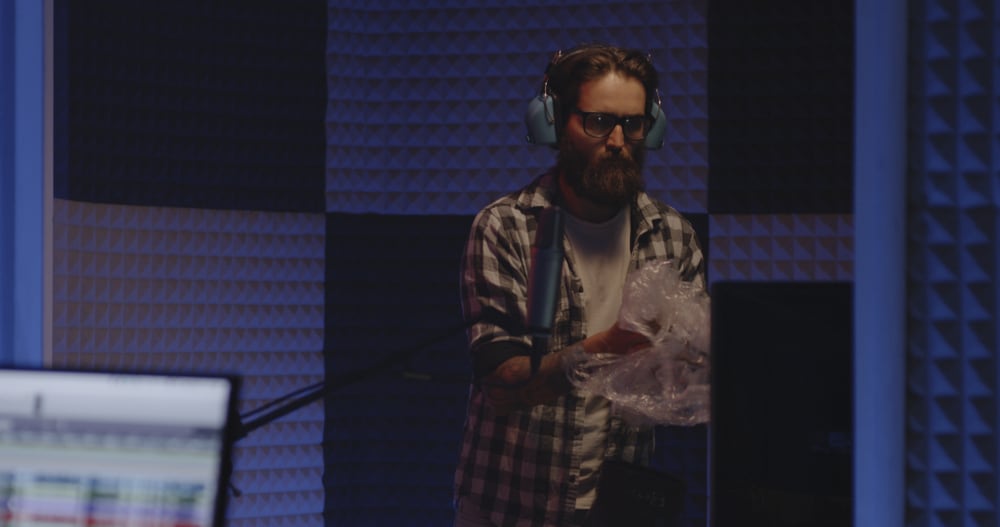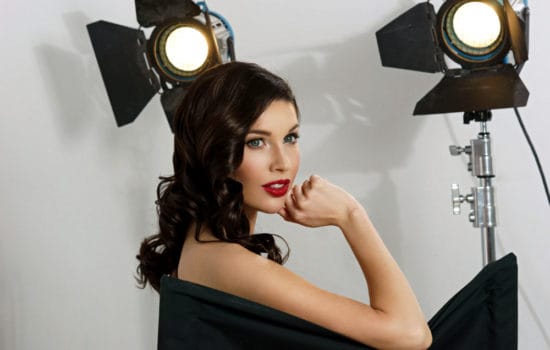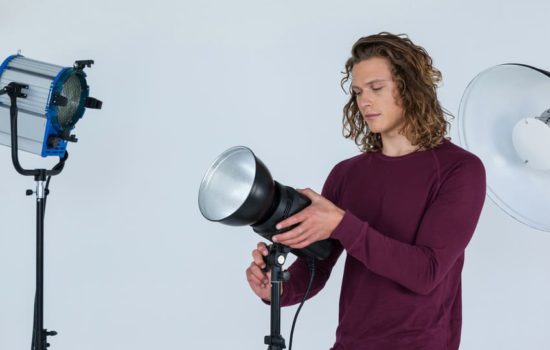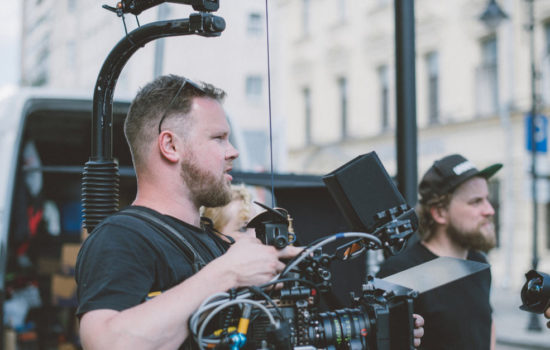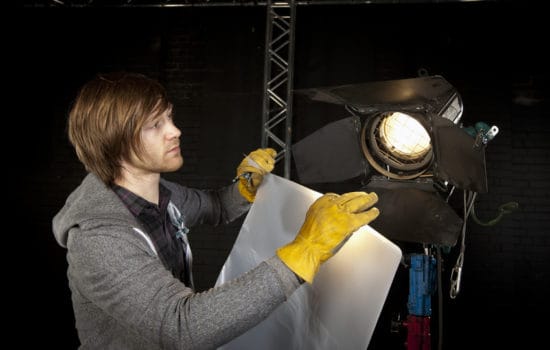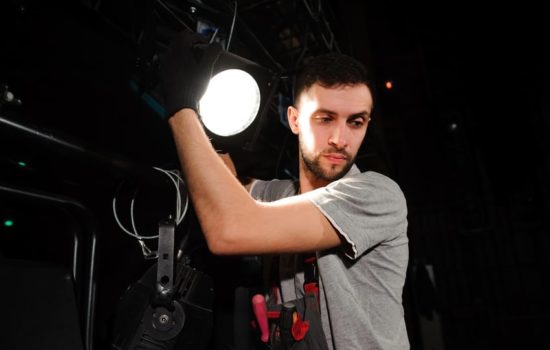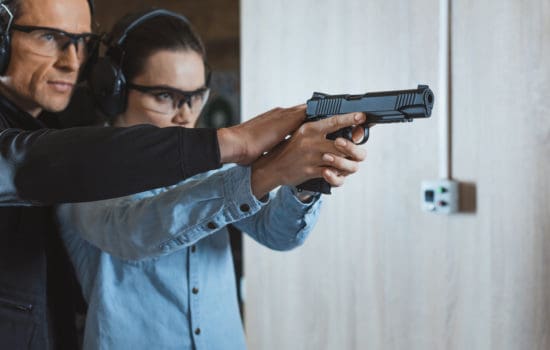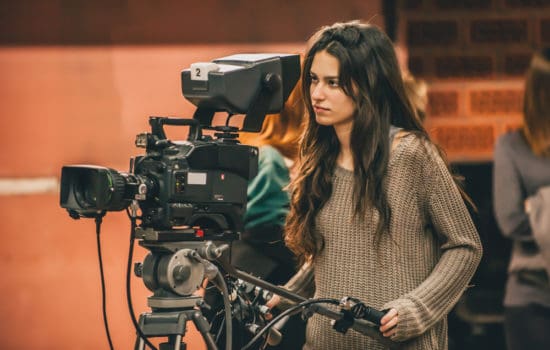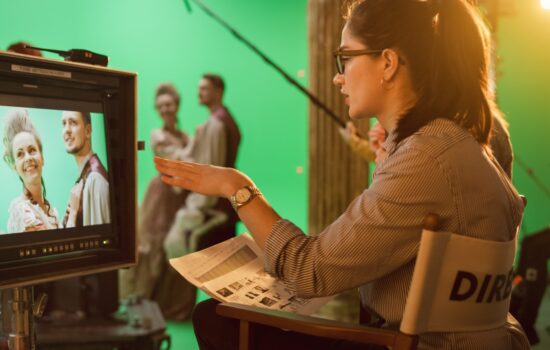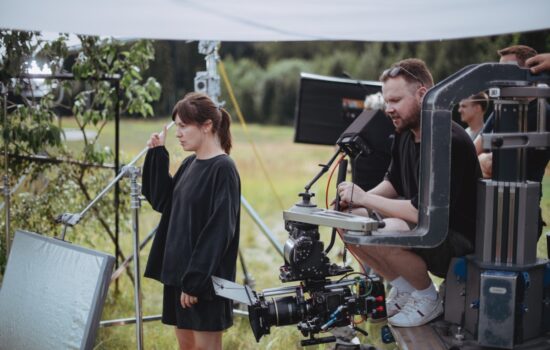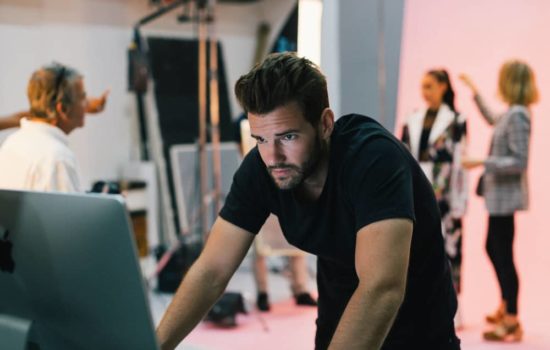Foley Sound can best be described as sound effects recorded during post-production while watching the edited picture. It is intended to blend with the rest of the soundtrack, which includes dialog, music or other recorded effects or ambient sound.
Among the first uses of Foley was in 1926 for the Warner Bros. movie Don Juan, which was essentially a silent movie but had a synchronized music score added in post-production. Sword clashes in a fight sequence were also added and the art of Foley was born!
However, it’s unclear if they were recorded separately or at the same time as the New York Philharmonic Orchestra.1
When sound was added to films in Hollywood in the late Twenties, movie studios created Sound Effects Departments to add this technique to their soundtracks. “Foley” didn’t become the name for post-synced sound effects until the 1960s during the breakup of the Hollywood studio system, when many Sound Editors started forming independent sound companies around Los Angeles.
Those who had worked at Universal Studios had called it “Foley” because of the man, Jack Foley, who had run that department for Universal for over 45 years. Thus, while he was one of the first practitioners of the art that bears his name today, he did not, as common legend has it, “invent” the process.
There are several reasons you might use Foley sound in a film:
- The production sound doesn’t have the desired impact
- Sounds that couldn’t be made in production
- Sounds that make little or no sound in production
- For foreign dubs
- To fill in sound lost due to ADR (Automated Dialog Replacement)
Foley is only a part of the sound effects component of motion picture sound. The other elements are “BGs,” (background ambiances) such as wind, city traffic, birds, etc., and “hard effects,” which include gunshots, car engines, and doors. Hard effects and BGs are edited from recordings obtained either from the field or a sound library.
Foley is generally broken down into two categories, footsteps and props, and while Foley can be edited from library recordings, in the movie industry today they are often created custom for each film to make it sound more natural.
As we all know, movie production is make-believe. The impenetrable steel door you see on screen is most likely made of wood. In order to make the audience believe that the door is indeed steel when someone bangs on it or opens it, many components of metal sounds are added to the soundtrack create the illusion.
Even regular doors might need some enhancing, especially on a set that was built for the production. It might look like a solid, Victorian door, but probably sounds like the hollow wood it really is.
What is meant by Foley sound?
Anna Keizer (CareersInFilm)
Foley sound is a technique created in post-production whereby audio creatives generate sounds that weren’t captured – or successfully captured – on set. These sounds are created as the Foley Artists watch the shot footage so that they can generate the sound in real time with the film.
Let’s consider a fight scene. These scenes are choreographed to make it appear as if fists are making an impact or bodies are flying across the bar and against the wall. It’s another illusion. In order for the audience to believe what is going on in the scene they must hear what they see – the punch in the face, the body fall with the right intensity and timing against the wall.
And what about that bottle someone smashes across his head? It’s fake and needs a sound, too! Horror movies are also good examples of this. Most practical visual effects (VFX) are unremarkable in this realm and computer-generated VFX have no sound, so many melons and vegetables are sacrificed to create the sonic, squishy experience of blood and guts.
What are the three types of Foley sounds?
Anna Keizer (CareersInFilm)
Foley sound can encompass any number of audio elements, but the most common uses of Foley include:
- Footsteps
- Other movements
- Props
Some sounds need Foley to help to make an impact. In this case, it’s simple things that might need enhancement, like the swing of a baseball bat before, “Strike one!” Or maybe it’s the sound of someone sliding down a rope or a zip-line.
Adding this sound in post also helps continuity from cut to cut. The Picture Editor will cut the shots together, manipulating the pace, but when the sound is added in post, it’s continuous and no longer chopped up, so it goes smoothly across cuts.
What is an example of Foley?
Anna Keizer (CareersInFilm)
Foley sound can be used to generate nearly any kind of natural sound from a person falling into a pile of leaves to a dog chewing on a bone and all other sounds in-between.
Foley has a further use – beyond the “domestic” mix – in the creation of the “music and effects” (M&E) mix that is sent around the world for the dubbing of additional language versions.
Even if the recording of footsteps and general movement on the set does not need to be improved for the original version (OV), if they occur under dialog, they all have to be put back in so that the studios around the world only need to “add dialog” to create a version that matches the feel of the OV.
A subtle sound that is also added to an M&E is cloth movement, known in New York as “rustle.” The Foley Artist will watch the film and will rub a piece of cloth to match the movements of the Actors. Of course, this cloth must be changed during the recording, as a satin dress will sound different than blue jeans or a nylon windbreaker!
ADR is the recording of an Actor’s dialog in a studio, also to edited picture. This can happen for a number of reasons. It can be technical or it can be a rewrite of the script to make things more clear, or it can even be a different performance of the same lines.
Whatever the reason, production sound is lost with ADR, so those sound effects need to be created.
“Sound design” is a broad term that can overlap all three parts of the sound effects world, and is generally used to describe abstract sounds that have to be created.
Perhaps the clearest examples of this come from the Star Wars universe, in which Ben Burtt had to create the now-iconic sounds from a variety of sources because Wookiees and TIE fighters . . .don’t exist!2 Additionally, sound design ambiances can often be indistinguishable from music.
It should also be noted that many films go to the trouble of recording sound effects “wild,” (i.e. not to picture) custom for a film, regardless of the size of the Sound Editor’s library. This will not only include overlap to the world of Foley as noted above, but also cars, guns, and ambiances.
The recording of cars doors and interiors is important enough that when a new Foley stage was built at Skywalker Ranch in 2015, they did it in a building where George Lucas had previously-stored cars, and conveniently has a large door to drive them in.3
A Foley stage is a specially designed studio. It’s a place that is unique to the world of sound recording for its hodgepodge of surfaces and props, the latter often numbering in the thousands. Imelda Marcos would envy the collection of shoes on top Foley stages!
The need for a large variety of props is not just that they might need a typewriter at any given moment, but maybe they can use those keys for other sounds. For example, All the President’s Men begins with the proverbial blank sheet of paper and when the keys finally hit the screen in extreme close-up, they have a visceral impact that is aided by the addition of other sounds.
Fun Fact: sometimes the effort for reality in Foley will lead the teams outside their stages and into the “real world.” On
Apocalypse Now, the footsteps on the Navy PBR (Patrol Boat River) were recorded using a videotape reference on a PBR on Coppola’s Napa, California estate.
5The surfaces (also known as pits) give Foley Artists the ability to walk, run, and skip on mud, concrete, wood, gravel, etc.
While it might seem that one could have small, moveable boxes with each one carrying a different surface, over the years Foley Artists have come to realize that mounting the surfaces on the floor is the only way to create a proper, natural-sounding resonance. Some go so far as to say that the pits have to be connected to earth itself.
Water pits have evolved extensively, and now every major Foley stage has a well-thought-out water pit that just doesn’t contain the water but also takes into consideration the spillage so that it can work not only for a bathtub but also for a side of a river, where the water is not splashing onto tiles.
If you are interested in this art and would like a visual demonstration, a great documentary to watch is Terry Burkes’ and Andy Malcolm’s Track Stars.
It’s eight minutes that sum up the Foley process but also gives you a glimpse of how much an art Foley is. The key to good Foley is the Artist. Making things natural and seamless requires craft, whether it’s to simulate ordinary footsteps or the footsteps of an alien.
